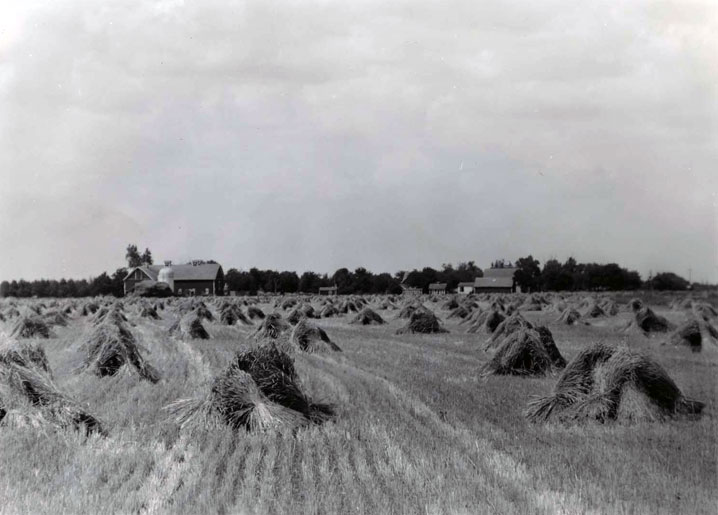We’ve launched a new web portal! Visit findhistory.nd.gov to search our collections.
Due to a road closure, the Killdeer Mountain Battlefield State Historic Site is temporarily closed.
North Dakota's basic industry, agriculture, underwent major difficulties in the 1970s and 1980s, again emphasizing that the state was a participant in a world-wide economy. Record prices for American grain in the early 1970s, the result of huge overseas sales to the Soviet Union, led many farmers to expand their operations and others to go deeply into debt to enter agriculture. As the price of land climbed, so too did prices for machinery, seed, and the other "inputs" of agriculture. Commodity prices, however, never returned to the levels of the early 1970s, and by the end of the decade many farmers found themselves unable to generate enough income to maintain their debts. Rural discontent mounted, generating organization of a state branch of the American Agriculture Movement, a national rural protest movement, and leading to development of special credit counseling services by state government. The trend continued into the 1980s. Though land values dropped substantially, the number of farms has declined steadily.

Address:
612 East Boulevard Ave.
Bismarck, North Dakota 58505
Get Directions
Hours:
State Museum and Store: 8 a.m. - 5 p.m. M-F; Sat. & Sun. 10 a.m. - 5 p.m.
We are closed New Year's Day, Easter, Thanksgiving Day, and Christmas Day. We are closed at noon Christmas Eve if it falls on Mon.-Thurs. and are closed all day if it falls on Fri.-Sun.
State Archives: 8 a.m. - 4:30 p.m. M-F, except state holidays; 2nd Sat. of each month, 10 a.m. - 4:30 p.m. Appointments are recommended. To schedule an appointment, please contact us at 701.328.2091 or archives@nd.gov.
State Historical Society offices: 8 a.m. - 5 p.m. M-F, except state holidays.
Contact Us:
phone: 701.328.2666
email: history@nd.gov
Social Media:
See all social media accounts